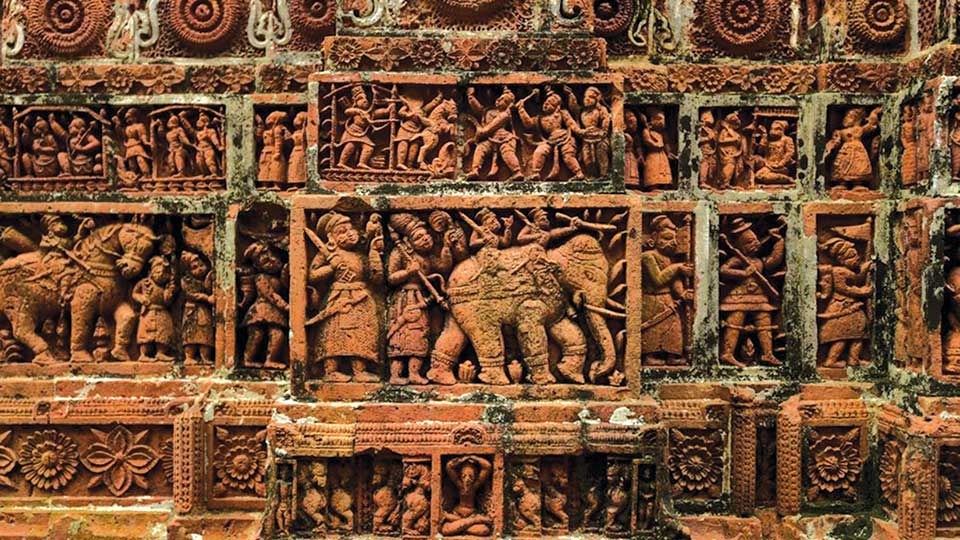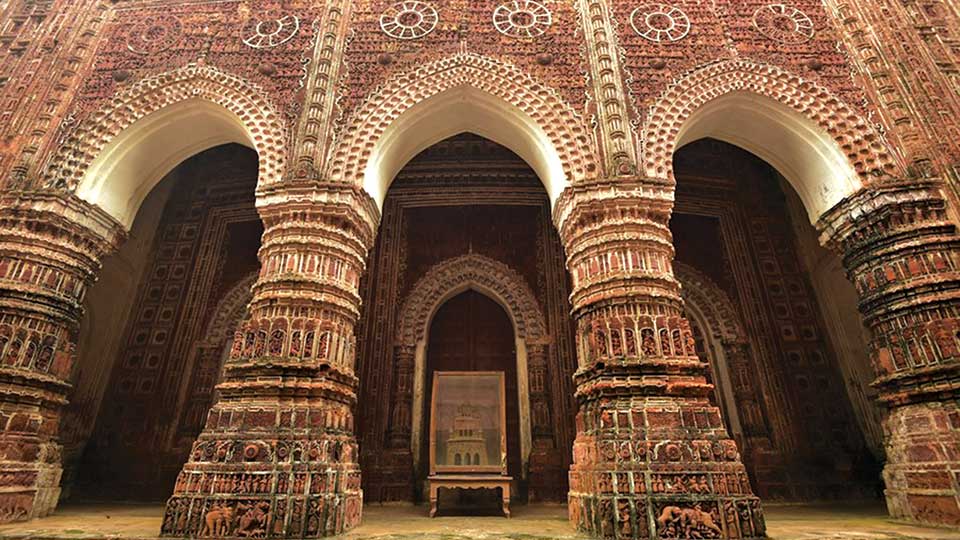
Dinajpur : History whispers that race, religion, and nationality are but fleeting banners, their brilliance fading with the relentless march of time, until even the proudest emblems are worn thin by the slow erosion of memory and the quiet hand of nature.
Yet time, in its paradox, sometimes deepens the worth of the old and the ancient. Among our treasures stands the Kantaji Temple of Dinajpur-an exquisite testament to the artistry of history, its intricate beauty, and its timeless grace, making it a jewel beyond price and deserving of reverent preservation.
Raised between 1704 and 1752 AD by the noble Maharaja Pran Nath, this resplendent temple stands as a devotion to Lord Krishna and his beloved consort Rukmini.
The first stones were set in place under Pran Nath's vision around 1704 AD, and the masterpiece found its completion under the reign of Maharaja Ramnath, its every carving breathing the spirit of an age now lost to time.
Its hallmark artistry reveals itself in the grandeur of its edifice-ornate terracotta adorning the walls, while inside, the half-domes above the entrance arches and mihrab niches bloom with Persian muqarnas in delicate stucco, each detail a frozen cascade of craftsmanship and devotion.
The temple's silhouette swells with bulbous domes poised upon slender necks, each dome resting on octagonal drums crowned with lotus blooms and kalasa finials, like celestial diadems against the sky.

Its round pendentives weave the graceful transition to the domes, while multi-faced corner towers soar defiantly above the steadfast lines of mediaeval fortifications--together composing one of the most resplendent and awe-inspiring masterpieces of 18th-century architecture.
The divinity of the temple is associated with the tales of Mahabharata and Ramayana, the exploits of Krishna and his spirituality, and a series of extremely fascinating contemporary social scenes depicting the favorite leisure time of the aristocrat class.
There are also depictions of animated hunting scenes of wild games, royal processions of elephants, horses, camels, and dainty ox-carts of the nobility with their retainers in Mughal dress and arms.
The richly caparisoned majestic elephants and splendid stallions, their chariot and harness are vividly delineated. There are also curving of the zamindars who are seen squatting in their gilded palanquins puffing from luxurious hukkas with long sinuous pipes.
Mythological scenes are also depicted, such as the nativity of Krishna, the demon King Kangsa, successive attempts to kill the infant Krishna; Krishna's killing of the Putana ogress and the Bakasura or crane-demon. The detailing of the Hindu scripture in its clay and crafted forms are explicitly striking.
The temple consists of deities which depict the astonishing sense of reality, the endless panels of terracotta art embellishing and ornamenting the wall surface of the Kantaji Mandir, giving it a life and vitality of their own and are deeply imbued with the spirit nourished for thousand years on the silt-laden soil of Bangladesh.
Around 1897 the navratna or nine spired (in which the temple was built in) was destroyed. This iconic temple was later renovated and was financed by the Asian Development Bank under the World Heritage of South Asian Tourist Infrastructure Development Project. This renovation was supervised by the Archeology Department in 2015.












